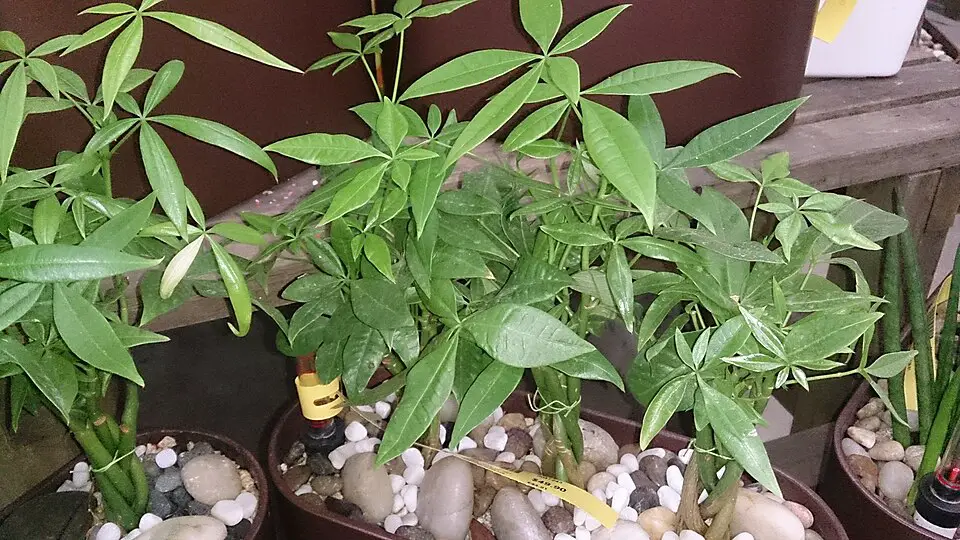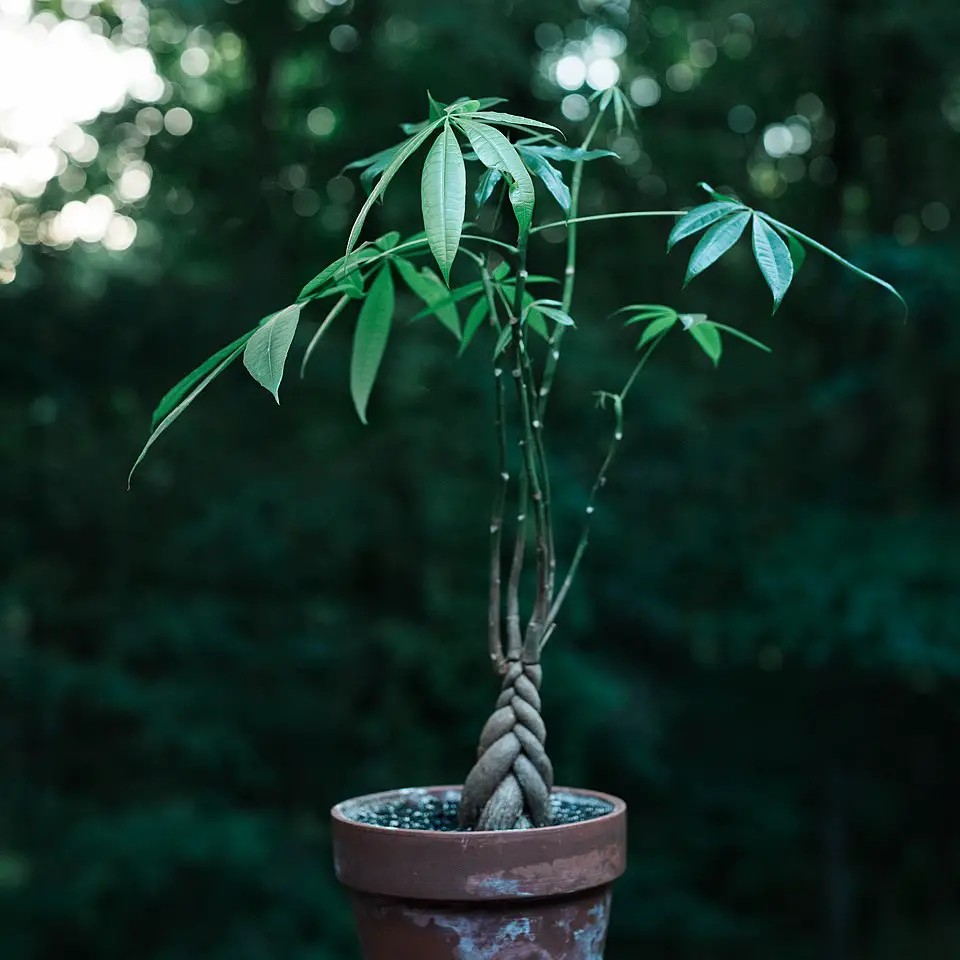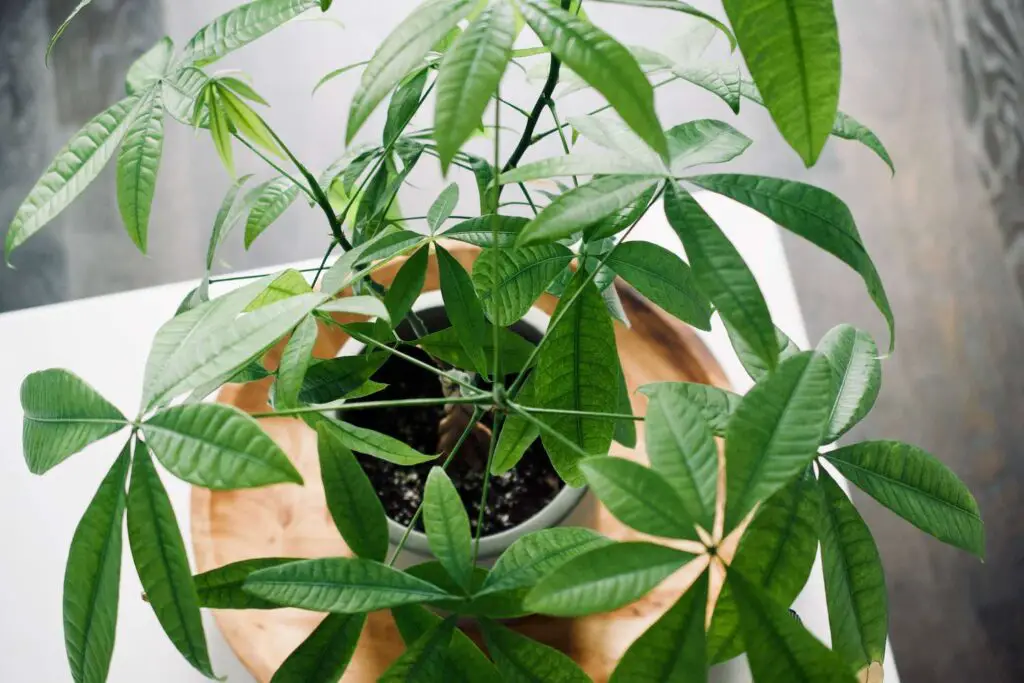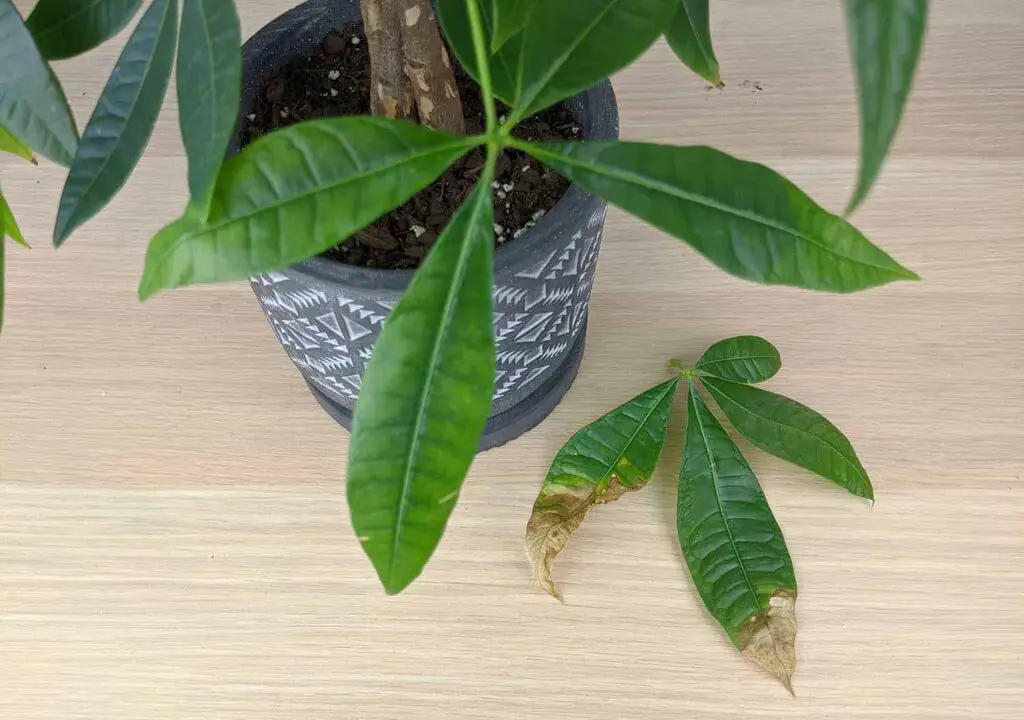Money Tree plants thrive with indirect sunlight, moderate watering, and high humidity. New plant enthusiasts should place them in well-draining soil, avoid overwatering, and feed them with a balanced fertilizer every few months for optimal growth.
Understanding the Money Tree
The Money Tree, scientifically known as Pachira aquatica, is a popular houseplant recognized for its braided trunk and lush green leaves. Originating from Central and South America, it symbolizes good luck and prosperity in many cultures. This resilient plant is not only visually appealing but also relatively easy to care for, making it an excellent choice for both new and experienced plant enthusiasts.

One of the most attractive features of the Money Tree is its adaptability. It can thrive in various indoor environments, provided it receives proper care. Understanding its specific needs will help you maintain a healthy plant that flourishes over time.
Light Requirements
Proper lighting is crucial for the growth of a Money Tree. These plants prefer bright, indirect light but can tolerate lower light conditions as well. Direct sunlight can scorch their leaves, so it’s important to find the right balance.
- Place your Money Tree near a window with filtered light.
- Avoid intense midday sun.
- Rotate the plant every few weeks to ensure even growth.
If you’re unsure about the light conditions in your home, you can use a light meter or observe how your plant responds over time. If the leaves turn yellow or drop, it may be receiving too much direct sunlight. Conversely, if growth slows, it might need more light.

Watering Guidelines
Watering is one of the most critical aspects of Money Tree care. Overwatering can lead to root rot, while underwatering can cause leaf drop. The key is to maintain a balanced watering schedule.
Here are some tips for effective watering:
- Water when the top inch of soil feels dry to the touch.
- Ensure that the pot has drainage holes to allow excess water to escape.
- During the growing season (spring and summer), you may need to water more frequently than in fall and winter.
Additionally, consider the humidity levels in your home. Money Trees enjoy humidity, so misting the leaves occasionally or placing a humidifier nearby can support their health.

Soil and Fertilization
The right soil mix is essential for your Money Tree’s growth. A well-draining potting mix is ideal to prevent water retention. Look for a mix designed for tropical plants or create one by combining regular potting soil with perlite or sand.
| Soil Type | Description |
|---|---|
| Potting Soil | Standard mix for houseplants. |
| Cactus Mix | Great for improved drainage. |
| Homemade Mix | Combine potting soil with perlite or sand. |
Fertilizing your Money Tree is also beneficial. Use a balanced liquid fertilizer every few months during the growing season to encourage healthy growth and vibrant foliage. Be careful not to over-fertilize as this can lead to salt buildup and damage the roots.
Pest and Disease Management
Keeping your Money Tree healthy means being vigilant about pests and diseases. These plants can be susceptible to a variety of issues, including spider mites, mealybugs, and root rot. Identifying problems early is crucial for effective treatment.
Common Pests
Some of the most common pests that affect Money Trees include:

- Spider Mites: These tiny pests thrive in dry conditions. Look for fine webbing on leaves and yellowing foliage.
- Mealybugs: These insects appear as white, cotton-like masses on the plant. They can weaken your plant by sucking out its sap.
- Aphids: Small green or black insects that cluster on new growth. They also feed on sap and can cause stunted growth.
To manage pests, inspect your Money Tree regularly. If you notice any signs of infestation, you can treat them with insecticidal soap or neem oil. Always follow the product instructions for safe application.
Disease Prevention
Preventing diseases is just as important as managing pests. Here are some tips to keep your Money Tree healthy:
- Ensure proper air circulation around the plant to prevent fungal diseases.
- Avoid watering the leaves; instead, water at the base to keep the foliage dry.
- Use sterile tools when pruning to minimize the risk of spreading infections.
If you notice any signs of disease, such as wilting or dark spots on leaves, remove affected areas promptly. In severe cases, consider repotting the plant in fresh soil.
Pruning and Maintenance
Regular pruning is essential for maintaining the shape and health of your Money Tree. It encourages bushier growth and can help eliminate any dead or damaged leaves.
When to Prune
The best time to prune your Money Tree is during the growing season, typically in spring and summer. This is when the plant is most active and can recover quickly from trimming.
How to Prune
Follow these steps for effective pruning:
- Use clean, sharp scissors or pruning shears to avoid damaging the plant.
- Remove any dead or yellowing leaves first.
- Trim back any leggy growth to encourage a fuller appearance.
- Aim to maintain a balanced shape by ensuring the branches are evenly spaced.
After pruning, ensure your Money Tree continues to receive proper care. This will help it recover and grow stronger in the following weeks.
Repotting Your Money Tree
As your Money Tree grows, it may outgrow its pot. Repotting is necessary to provide fresh soil and more space for root development. This process typically needs to be done every two to three years.
Signs It’s Time to Repot
Look for these indicators that your Money Tree may need repotting:
- The roots are growing out of the drainage holes.
- The plant appears top-heavy or unstable in its pot.
- The soil dries out too quickly after watering.
Steps for Repotting
Follow these steps for a successful repotting:
- Select a pot that is one size larger than the current one.
- Add fresh, well-draining soil to the new pot.
- Gently remove the Money Tree from its current pot, loosening the roots if necessary.
- Place the plant in the new pot, ensuring it is centered and upright.
- Add more soil around the roots and water thoroughly to settle the soil.
After repotting, place your Money Tree in a location with bright, indirect light and resume your regular care routine. This will help it adjust to its new home without stress.
Common Problems and Solutions
Even with the best care, your Money Tree may experience issues. Understanding these common problems and their solutions can help you keep your plant healthy and thriving.
Leaf Discoloration
Discoloration of leaves is a frequent issue among Money Tree owners. This can manifest as yellowing, browning, or black spots. Identifying the cause is key to restoring your plant’s health.
- Yellow Leaves: This is often a sign of overwatering. Check the soil moisture and adjust your watering schedule accordingly.
- Browning Leaf Tips: Browning can indicate underwatering or low humidity levels. Ensure you are watering adequately and consider misting your plant or using a humidifier.
- Black Spots: These could signal a fungal infection or overwatering. Remove affected leaves and allow the soil to dry out between waterings.
Leaf Drop
If your Money Tree is dropping leaves, it may be due to environmental stress. Here are some potential causes:
- Sudden Temperature Changes: Money Trees prefer stable temperatures. Avoid placing them near drafts, heaters, or air conditioning vents.
- Low Light Conditions: Insufficient light can cause leaves to drop. Move your plant to a brighter location with indirect sunlight.
- Overwatering: As with yellow leaves, overwatering can lead to leaf drop. Ensure proper drainage and adjust your watering habits.
Seasonal Care Adjustments
Your Money Tree’s care needs may change with the seasons. Being aware of these shifts will help you provide optimal conditions throughout the year.
Spring and Summer Care
During the growing season, your Money Tree will require more attention:
- Increase watering frequency as the plant actively grows. Check the soil regularly.
- Fertilize every 4-6 weeks with a balanced liquid fertilizer to support growth.
- Consider repotting if the plant has outgrown its current pot.
Fall and Winter Care
As temperatures drop and light levels decrease, your Money Tree may enter a dormant phase. Here are some adjustments to make:
- Reduce watering as the plant’s growth slows. Water only when the top inch of soil feels dry.
- Stop fertilizing during the fall and winter months, as the plant does not need extra nutrients during dormancy.
- Maintain humidity levels by misting occasionally or using a pebble tray with water.
Enhancing Growth with Propagation
I
f you want to expand your collection or share your Money Tree with friends, propagation is a great option. While Money Trees are typically grown from seeds or cuttings, here’s how to propagate using cuttings effectively:
Propagation Steps
- Select a healthy stem cutting that is about 6 inches long and has several leaves.
- Use clean, sharp scissors to cut just below a leaf node.
- Place the cutting in water or directly in potting soil. If using water, ensure at least one leaf node is submerged.
- If planted in soil, keep the soil moist but not soggy. If in water, change the water weekly to prevent rot.
- Once roots form (usually within a few weeks), transfer it to a pot with well-draining soil.
Propagation can be a rewarding experience, allowing you to enjoy more Money Trees or give them as gifts.
The Benefits of Having a Money Tree
Keeping a Money Tree not only beautifies your space but also brings several benefits:
- Aesthetic Appeal: With its attractive braided trunk and lush green leaves, it enhances any interior decor.
- Air Purification: Money Trees can help improve indoor air quality by filtering out toxins.
- Stress Relief: Caring for plants can reduce stress and promote a sense of well-being.
The Money Tree is more than just a houseplant; it’s a symbol of good luck and prosperity, making it an excellent addition to your home or office. Understanding its care requirements will lead to a thriving plant that brings joy for years to come.
Additional Tips for Money Tree Care
Bey
ond the basic care requirements, there are several additional tips that can help ensure your Money Tree thrives and remains a beautiful addition to your home.
Choosing the Right Pot
When selecting a pot for your Money Tree, consider the following:
- Material: Terracotta pots are great for allowing moisture to escape, while plastic pots retain more moisture. Choose based on your watering habits.
- Size: Make sure the pot is not too large, as this can lead to overwatering. A pot that is 1-2 inches larger in diameter than the current one is usually ideal.
- Drainage: Always choose a pot with drainage holes to prevent water from accumulating at the bottom.
Location Matters
The placement of your Money Tree can significantly affect its health. Consider these factors when choosing a location:
- Light Exposure: Ensure the plant receives bright, indirect sunlight. Avoid placing it in direct sunlight, which can scorch the leaves.
- Temperature Stability: Money Trees prefer temperatures between 60°F and 75°F. Avoid areas with drastic temperature fluctuations.
- Avoiding Drafts: Keep the plant away from drafty windows or doors, as cold drafts can stress the plant.
Regular Monitoring
Regularly check your Money Tree for signs of distress. Look for changes in leaf color, growth patterns, or any signs of pests. Early detection can make a significant difference in managing issues before they escalate.
Seasonal Decorations
Many plant enthusiasts enjoy decorating their Money Trees during holidays or special occasions. Using lightweight ornaments or ribbons can add a festive touch without harming the plant. Just be cautious not to add too much weight to the branches.
Final Thoughts
Caring for a Money Tree can be a fulfilling experience that enriches your living space. With its symbolic meanings of prosperity and good luck, this plant not only enhances aesthetics but also contributes positively to your environment. By understanding the specific needs of your Money Tree, including light, water, soil, and pest management, you can ensure its longevity and vibrancy.
Remember that each Money Tree is unique and may have its preferences based on its environment. Don’t hesitate to adjust your care routine as needed. Engaging with your plant regularly will deepen your connection and enhance your enjoyment of this beautiful specimen.
With proper care and attention, your Money Tree will thrive, bringing joy and tranquility to your home for years to come. Whether you are a new plant enthusiast or an experienced gardener, the journey of nurturing a Money Tree is rewarding and educational. Embrace the process and watch as your plant flourishes!
